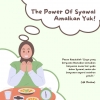Pitriyani Afipah
English Education Program, Postgraduate Faculty
Universitas Indraprasta PGRI
email: afipahpitriyani@gmail.com1
- This study investigates 1) the use of simple present tense verb and temporal conjunction on students’ writing procedure text, 2) the frequency of errors, 3) the types of errors and source of errors. The research method used is a descriptive qualitative method. The procedure employed in this study was collecting the student’s work on writing procedure text, analyzing the data, interpreting them, and making conclusion of the study. The ninth-grade students at SMPN 17 and SMPN 12 in Cirebon in the academic year 2020/2021 are the participants of this current research. There were 60 writing had been analyze. The result shows the errors of the use of simple present tense verb for errors omission (33, 92%), addition (14,28%), misordering (20,53%), misformation (31,25%). The error of using temporal conjunction for errors omission (88, 70%), misformation (10, 16%), addition (1%), and misordering (1%). Significance to the source of errors are intralingual and interlingual turn out to be the main reason that provoked the blunder in the student’s writing.
- Keywords: Simple Present Verb, Temporal Conjunction, Error Analysis, Writing Procedure Text.
Introductions
When the writer was a child, mother and teacher are the center of information. Mother can answer all questions given, teacher as well. In today's digital era, the student doing homework by asking "hallo google", then google answer completely. But, mother and teacher answering the question with love, google doesn't. Everyone can easily access information about everything by them self. For examples cooking guides, guidelines for creating accounts, guidance on creating google forms, and so on, especially guidance in making learning media through digital media quickly and accurately. With the existence of self-quarantine "just at home" related to breaking the chain of the spread of the coronavirus everyone in the world are looking for information that they do not know through guidance on google. Of course, the information presented must be understandable by the reader. Thus, it is very important to understand the procedures for making a tutorial either in spoken or written.
To deliver a tutorial or procedure for making or doing something requires a language that can being understood by everyone. English has almost become an international language. Except for Chinese, more people speak it than any other languages. Spanish is the official language of more countries in the world, but more countries have it as their official and unofficial second language. More than 70 of the world's mail written in English. It is the primary language on the internet. In international business, it used more than any other language, and it is the language of airline pilots and air traffic controllers all over the world. So that, the position of English is very important and urgent to become a global player. In Indonesia, English is contained in the curriculum 2013 as a language that must be learned starting from the junior high school level. English at the primary school level is not mandatory, it is only allowed as a local content subject.
Based on Curriculum 2013, the scope of English subjects is determined based on communicative aspects, such as Communicative competence in functional discourse and Language elements. Communicative competence in functional discourse aims to develop society and academic potential for students using descriptive, recount, narrative, procedure, and factual reports for SMP / MTs levels. Language elements, as a tool to use English accurately and acceptably, include discourse markers, vocabulary, grammar, speech, word stress, intonation, spelling, punctuation, and neatness of handwriting.
The skill of writing procedural texts is a skill that must be mastered by the ninth grade students of Junior High School. This is the reason for how important it is to master writing procedures. Students must master grammar and all the elements needed in the text. Such as basic words for giving instructions, temporal conjunctions, and so on.
The generic structure of procedure text is using the simple present tense verb that the function as a command, imperative or instruction. Swan (2005:453) describes that the simple present tense use in a similar way to give instruction, demonstration and direction. Based on this opinion, procedural texts must be arranged in the form of sentences composed of the present tense. Seaton's (2007: 80) "The simple present tense is express a general truth or a customary action." It means that the simple present tense is used to state fact, how things exist or behave (always/ permanently).
Fitria (2019:16) stated that: "Simple present tense is the tense for the description, definition and statements of general truth". According to Fitria, in formal English, simple present tense may also be used for example, in business letters, when describing, doing or thinking something. The simple present is a verb tense with two main uses. We use the simple present tense when an action is happening right now, or when it happens regularly (or unceasingly, which is why it's sometimes called present indefinite). "Use the simple present, to show events that take place now" (Rozakis, 2001:47).
Larsen-Freeman & Celce-Murcia (2016:107) stated that: The simple present remains in its base form (write, walk) with one exception-the third person singular form, which is made by adding an-s to the verb (writes-walks). From the statement, it is said that the base form is identical in nearly all cases to the present tense, it is difficult at first to see how one could tell the base form and present tense apart. In commonsense and technical explanations on procedure text action verbs are mainly used, for example, burns, expands, forces, whereas in interpretative explanations mental verbs may be used, for example suggest, reflects.
Explain how to make or to do something (on procedure text) generally require connectives-words (temporal conjunction) that join the verbs together so that logically indicate sequences that are temporal-when, then, first, next, after this.








